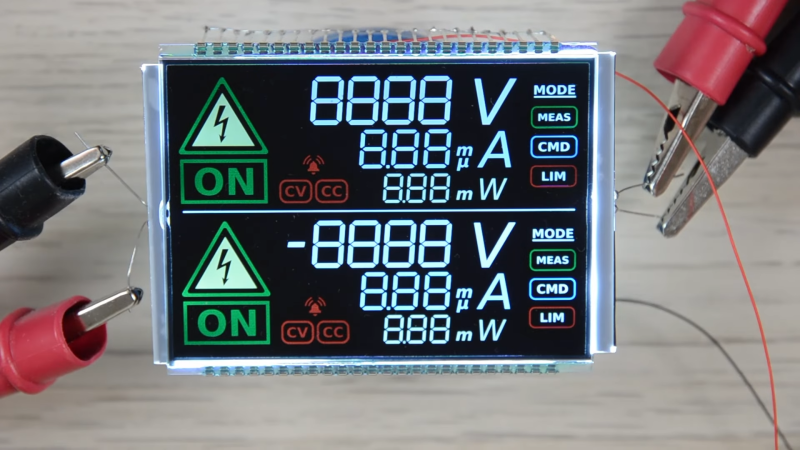These days, you can buy full graphical LCD or OLED displays for just a few dollars. However, if you’re so inclined, you can actually get your own segmented LCDs made to suit your own projects. [Icoso Labs] explains how it’s done, with plenty of handy tips along the way.
There are three primary things you need to do to design a segmented LCD. First, you need to design it visually, laying out all the individual elements you want on the display. Then you need to determine how you want to split them up into segments. Some elements you’ll just want to be a single monolithic on-or-off shape, while other areas you might want to create things like seven-segment numerals for displaying numbers and so on. With that done, you also need to specify various engineering details—such as whether you want a transmissive, reflective, or transflective display, and thicknesses, colors, and other important things. Armed with all that, you can take your design to a manufacturer and get them to make a bunch for you. Often, there’s a moderately high tooling cost to start a run, but you can then turn out more examples of your design for just a few bucks apiece.
It’s a neat guide to designing something few of us have ever considered sourcing for ourselves. We’ve featured other insights into the world of segmented LCDs before, too. Video after the break.
















Handy if one wants to go for that high-end audio equipment look.
Heh, used to design LCDs back in the day. Of course, I never had the right driver hardware. So I would test a victim from the new batch by placing one LCD edge connector on the radiator, holding a strip of conductive rubber with fingers on the other edge, and scuff my feet on the carpet. Static flipped the crystals pretty good…
Initial tooling fee is quoted as around $150, which is much less than I was expecting. Very tempting!
Wow, I agree. I would have thought a lot more.
I recall getting quotes of $1800 USD NRE plus MOQ of a couple thousand pieces. That was some years ago. It may have gone down, but 10:1 seems unlikely. I really don’t like to mislead suppliers on the potential quantities so they absorb the costs, even accidentally.
What’s the minimum run size?
Typically 1000 units, but some will go lower for a much higher per unit cost, so you might as well order that many. So typical cost will be around $2000.
I kinda miss starburst LCD displays: they’re enough to do text, but an 8-character x 15 segment display is simple enough to be driven directly by an MCU (120 segments). At $2000 for a run of 1000 units, means text displays for about $2 each. Here the 15 segments are the normal 7 segment digit segments + 6 star segments (I wouldn’t split the middle ‘-‘ segment) and a period segment.
If we’re driving it at 50Hz and we have 4x COMs then we need 24 pins, because each COM signal needs 2 pins. We can drive all digit segments at the same time (16-pins), I think. There are 8 states for 4 COMs, so that’s 8×50=400 Hz for the outputs. Or would 8x COMs work with adequate contrast?
https://ww1.microchip.com/downloads/aemDocuments/documents/MCU08/ApplicationNotes/ApplicationNotes/00563c.pdf
What you have to do varies by multiplex level! Although not-multiplexed would be expensive in terms of I/O drivers, it has the advantage that everything is just always an output. (Drive COM in phase, or opposite phase, of the 120 SEGs – it’s just 122 bits of shift register)
I also got good results with a 2-multiplex 2-7segment display and left one COM floating when I was driving the other COM.
You’re right that once you hit 4-multiplex you need fancier drive, and once you hit 8-multiplex you really want more expensive chemistry.